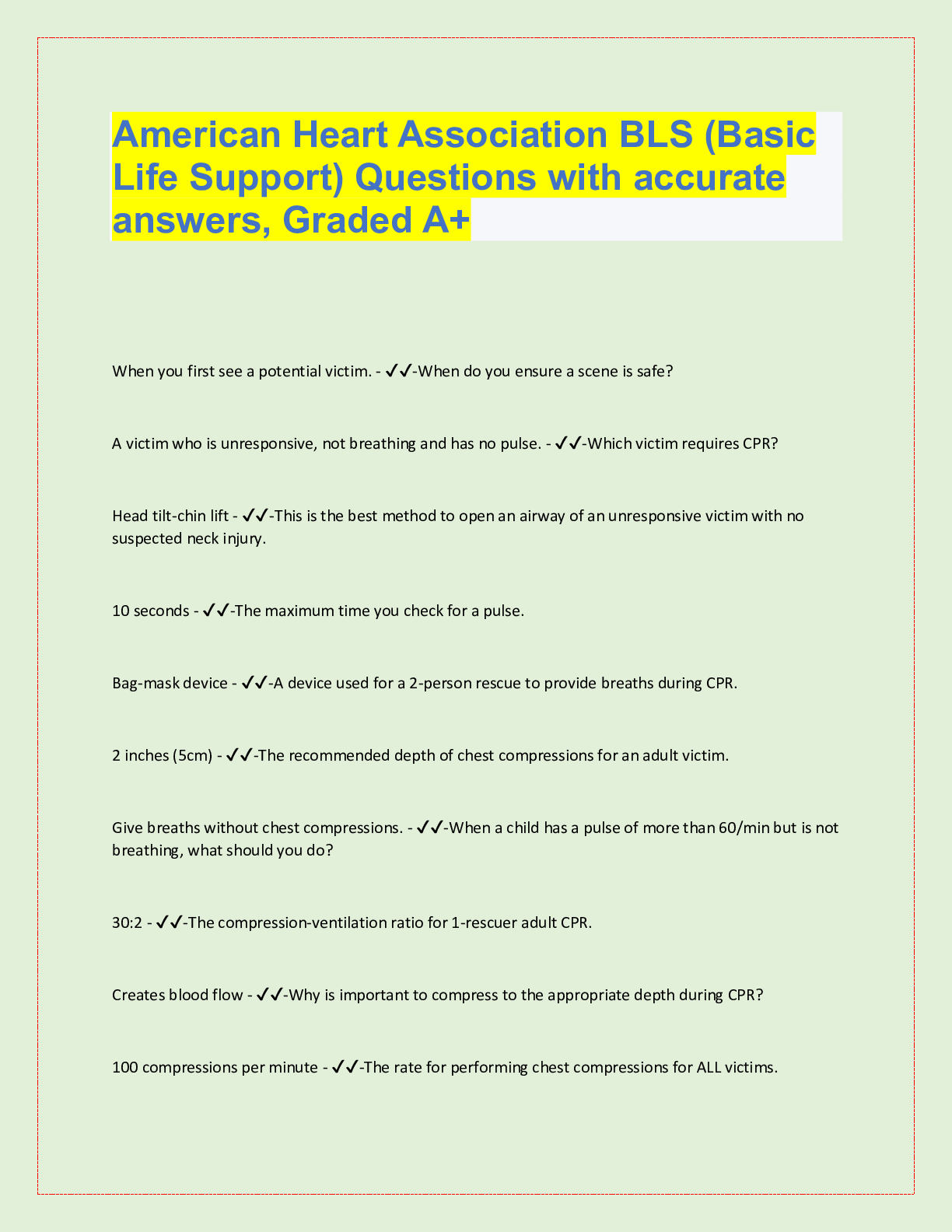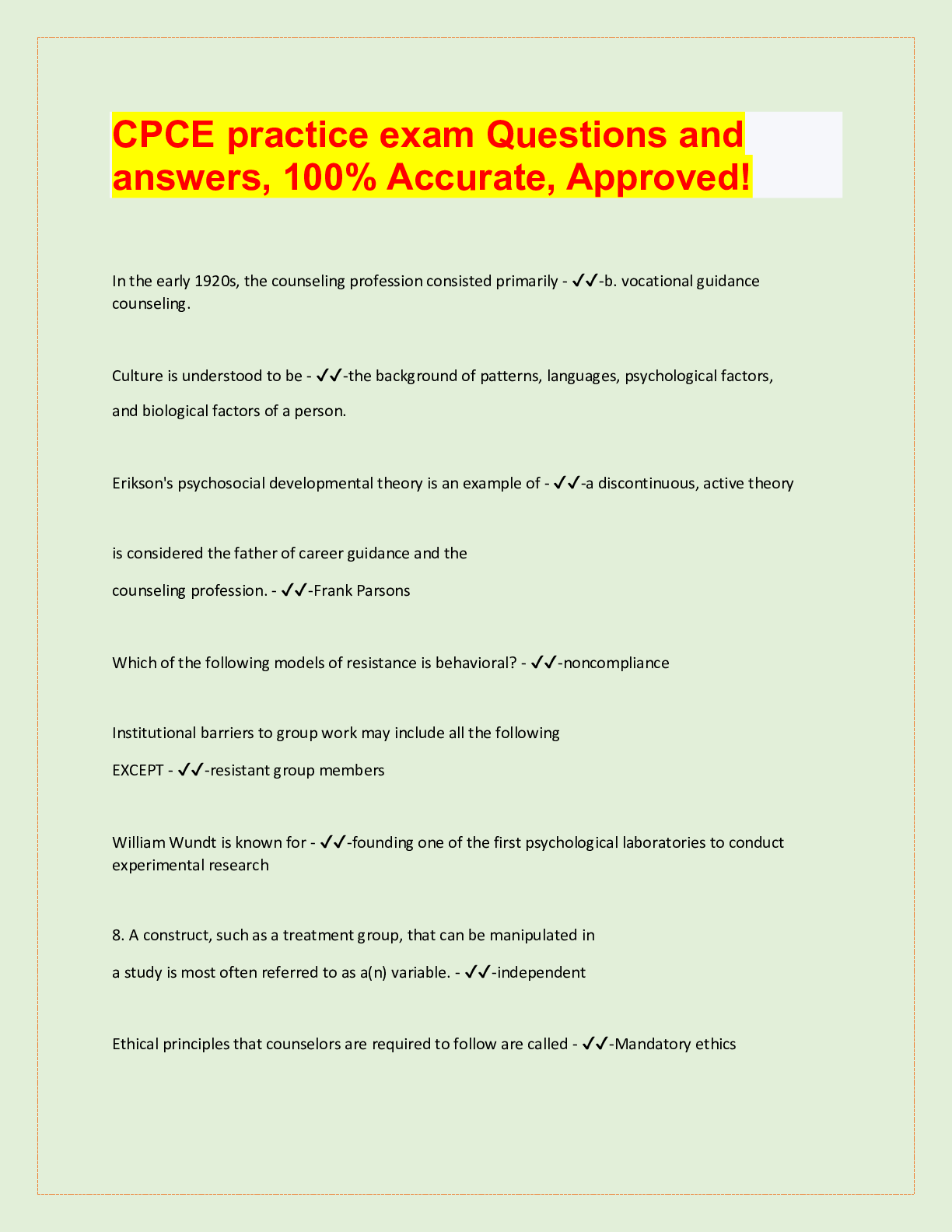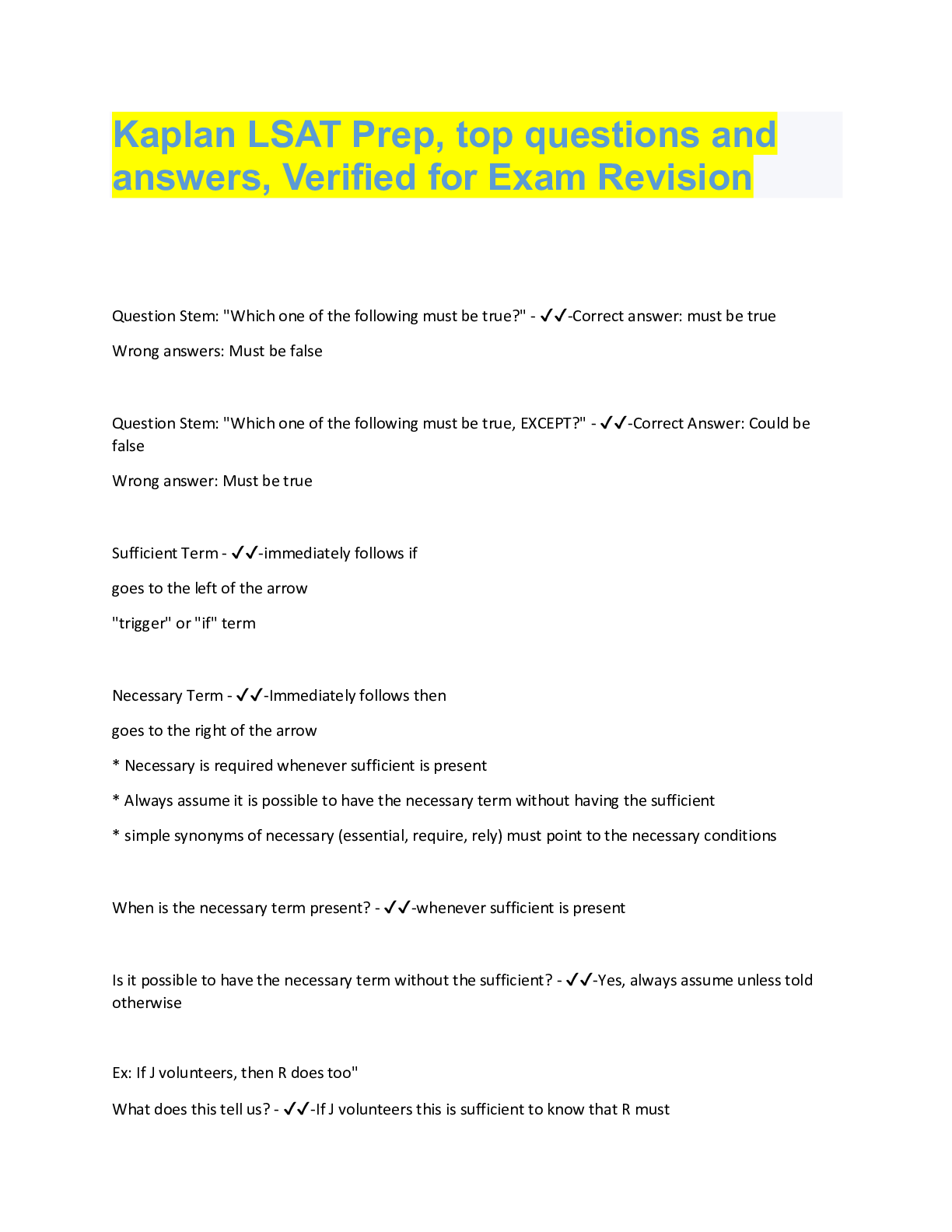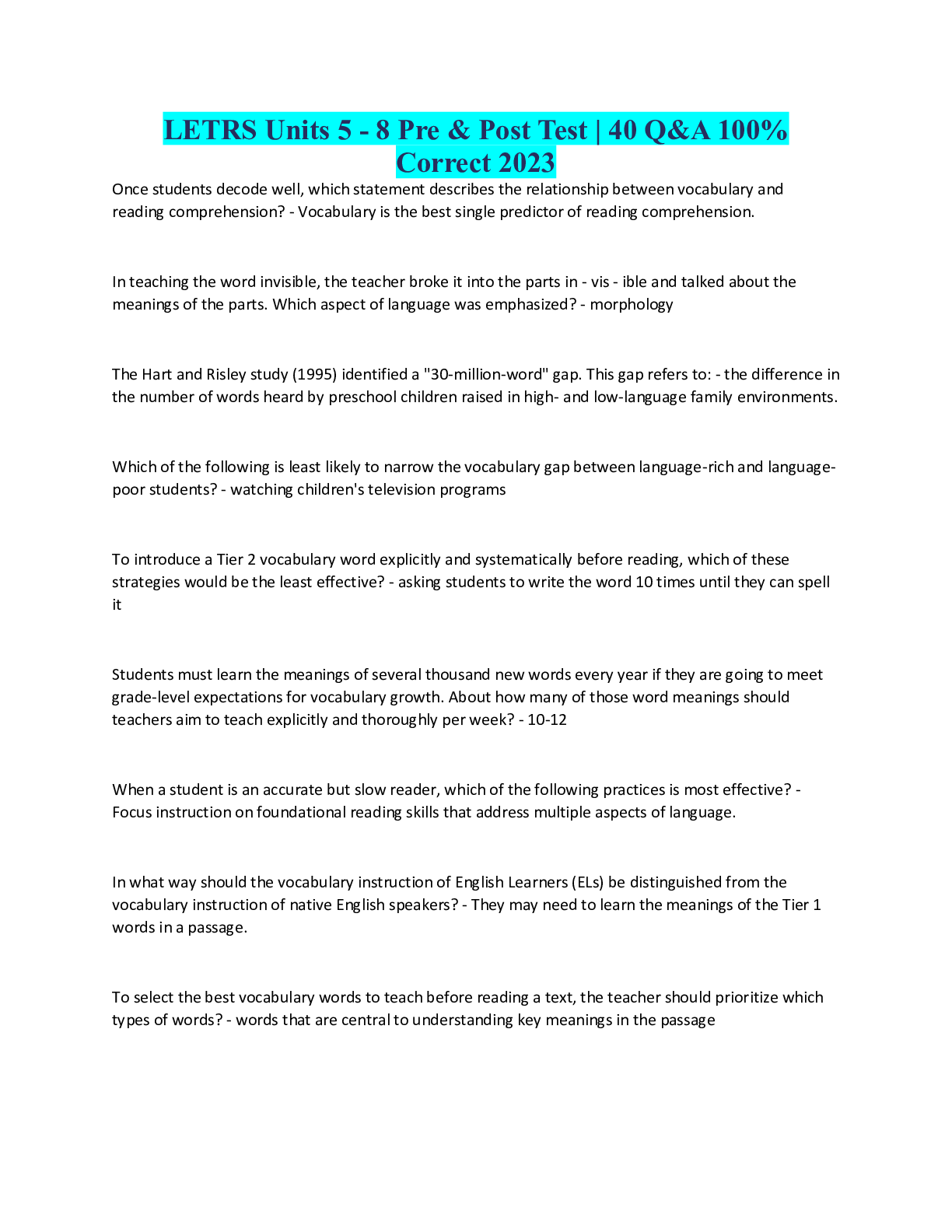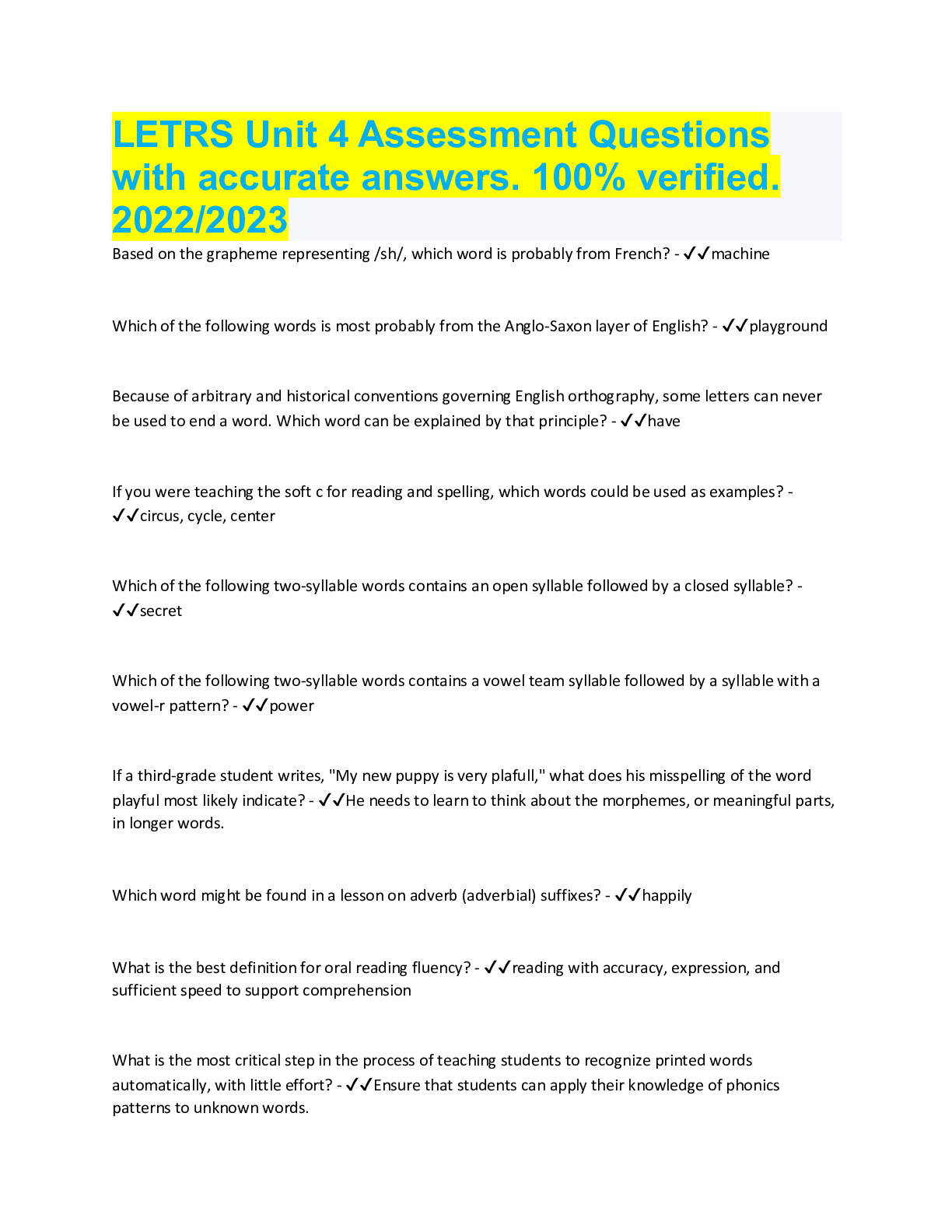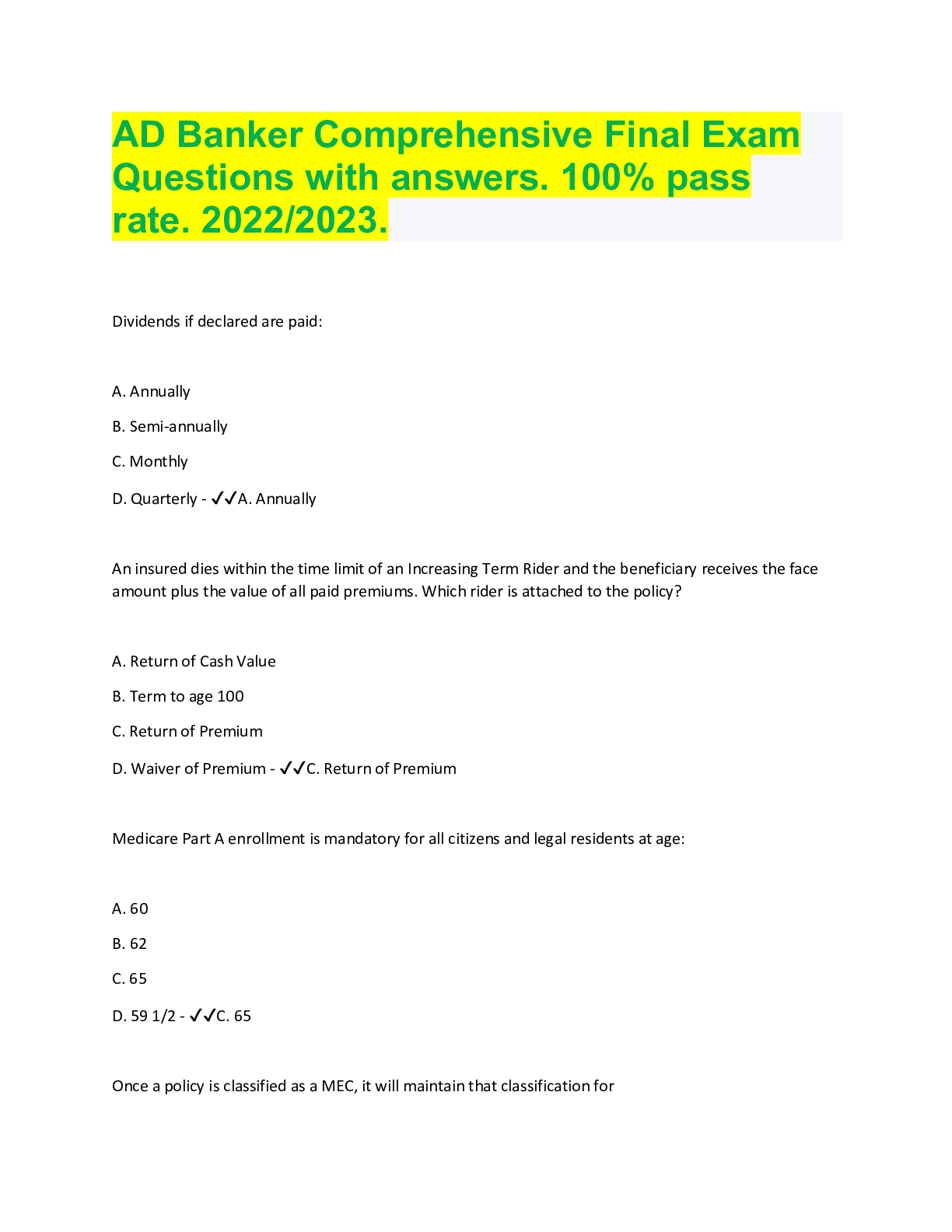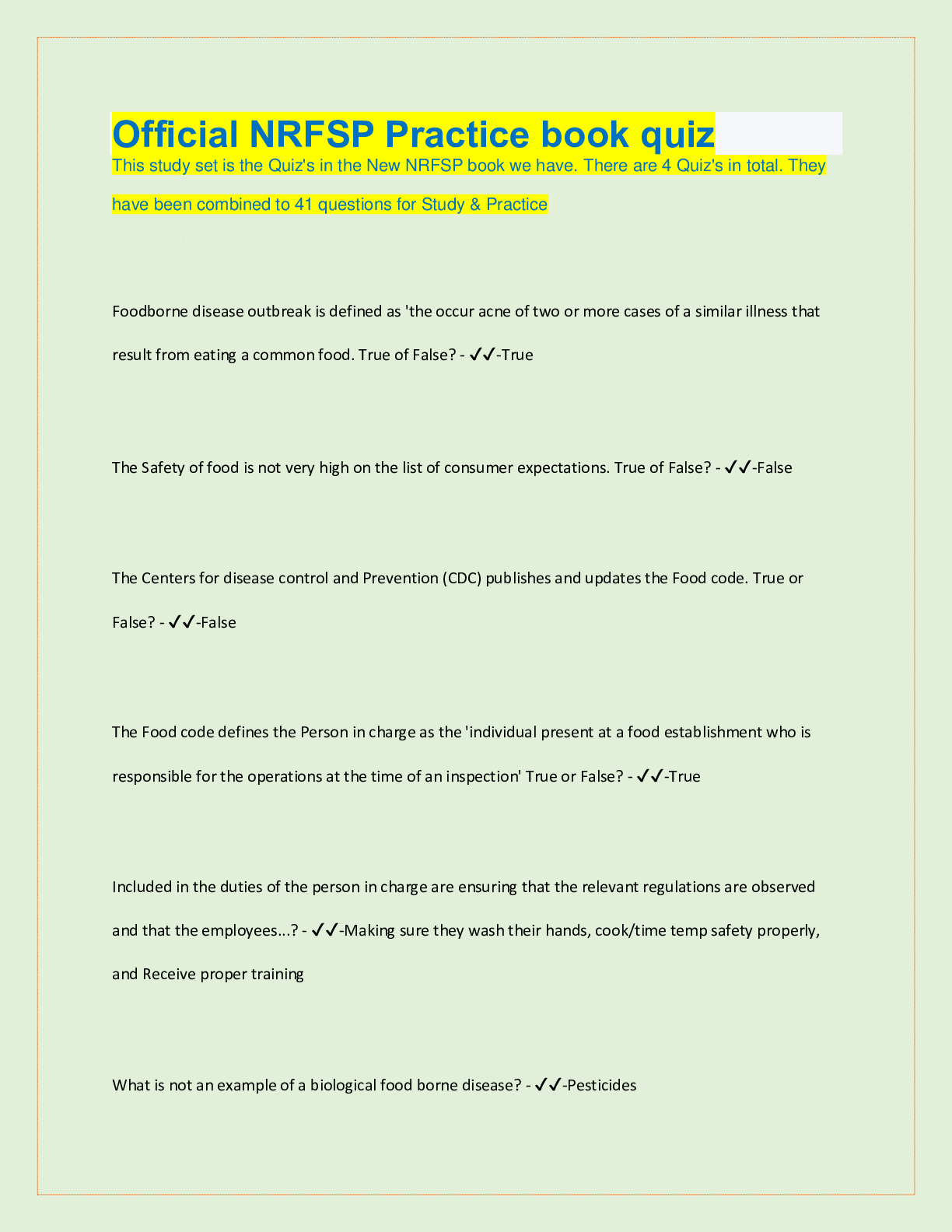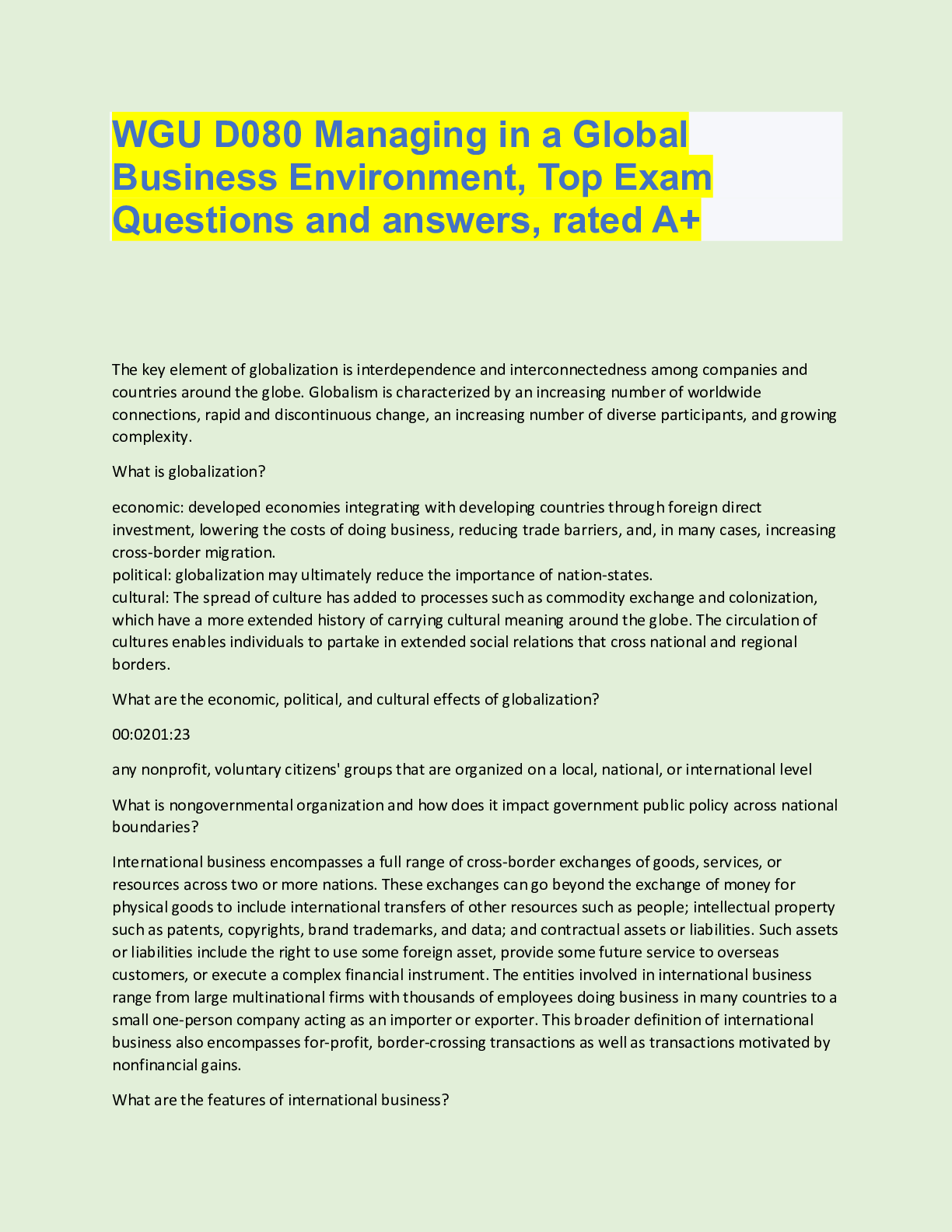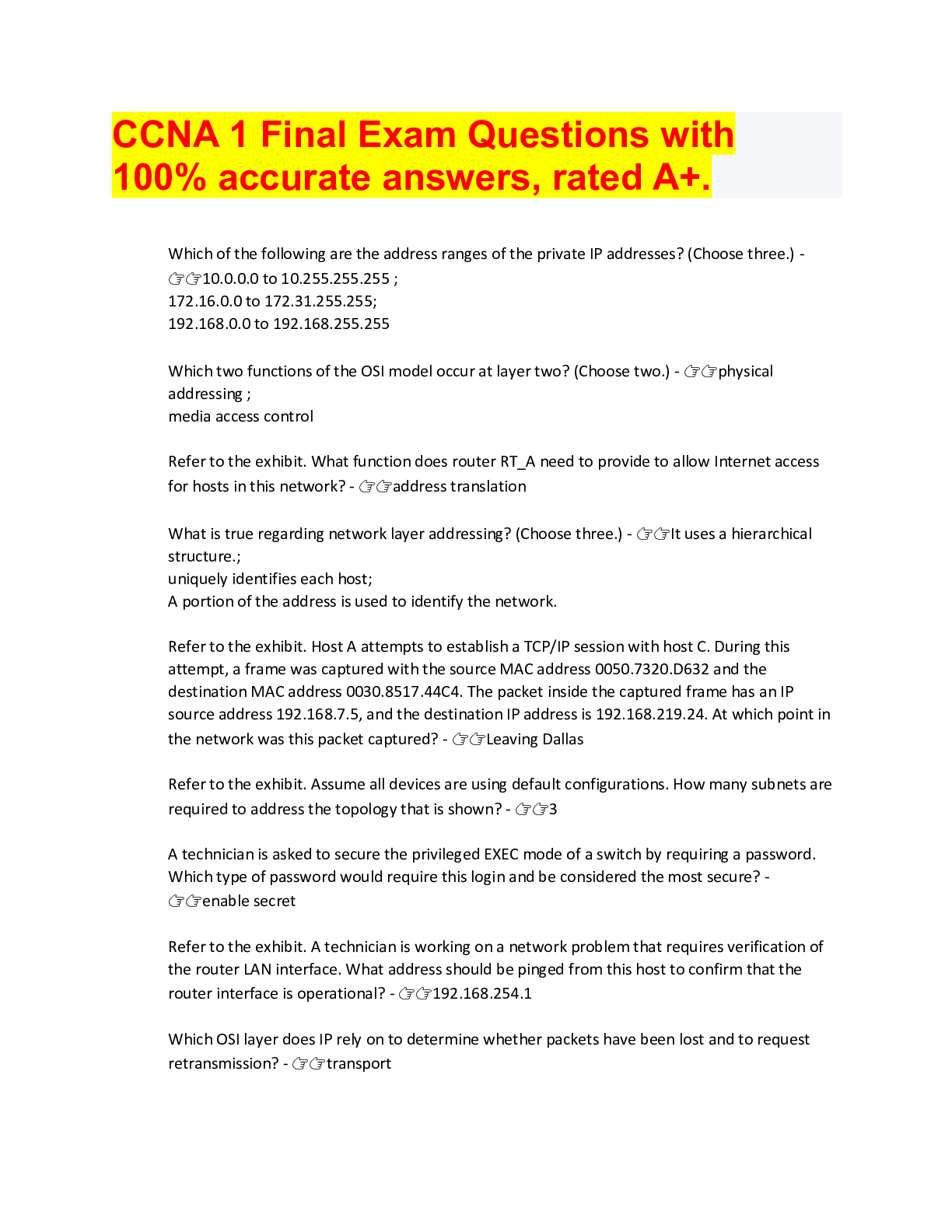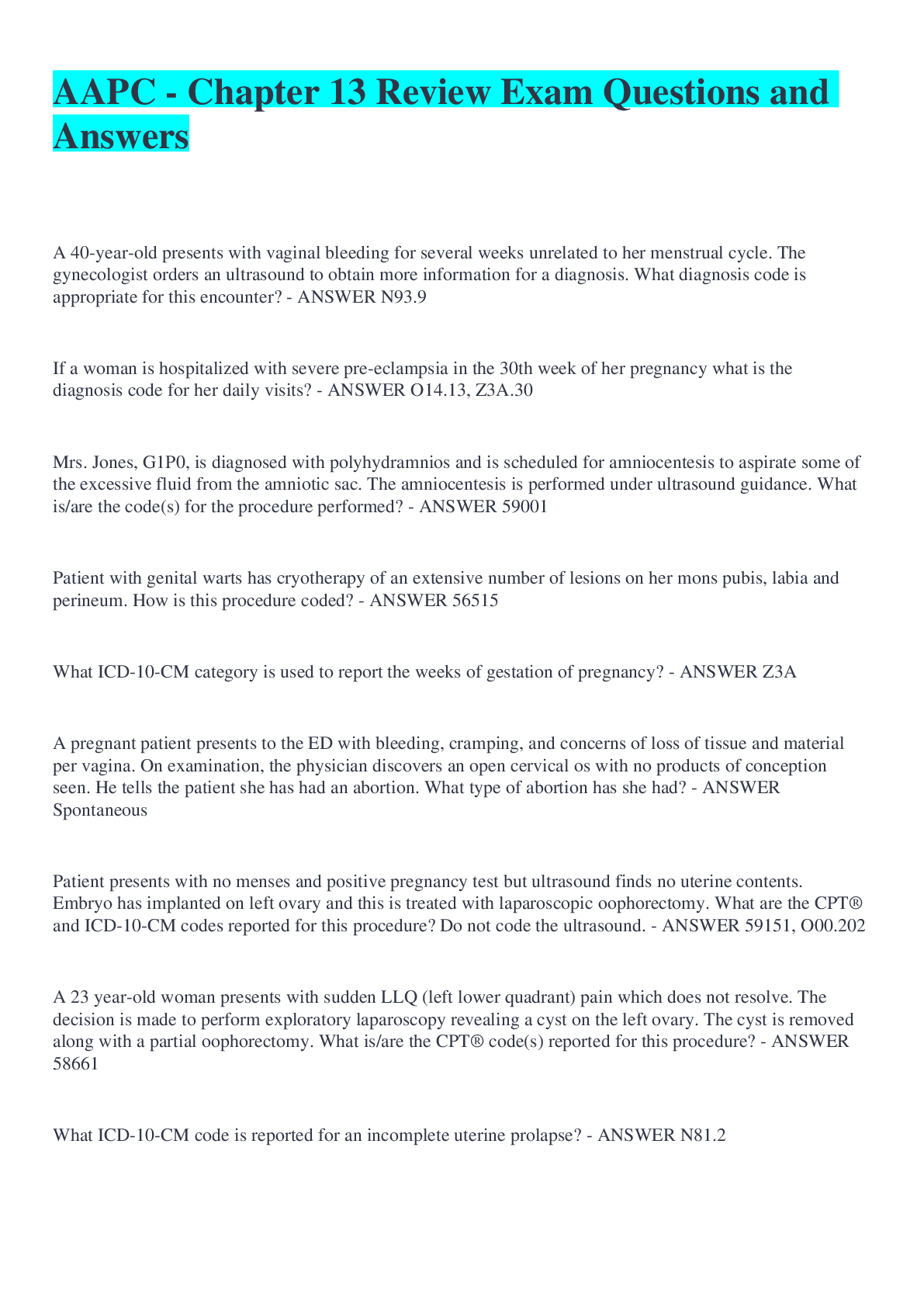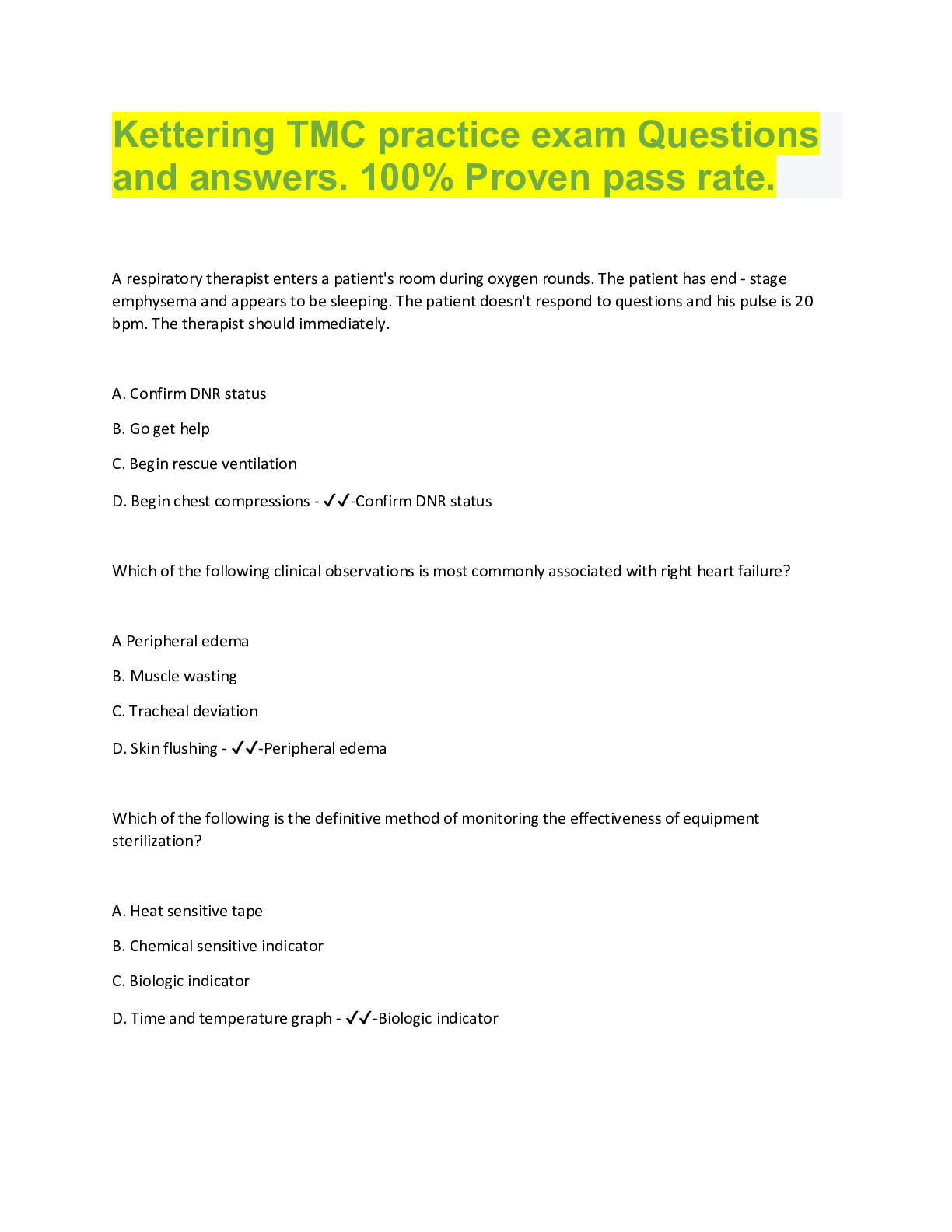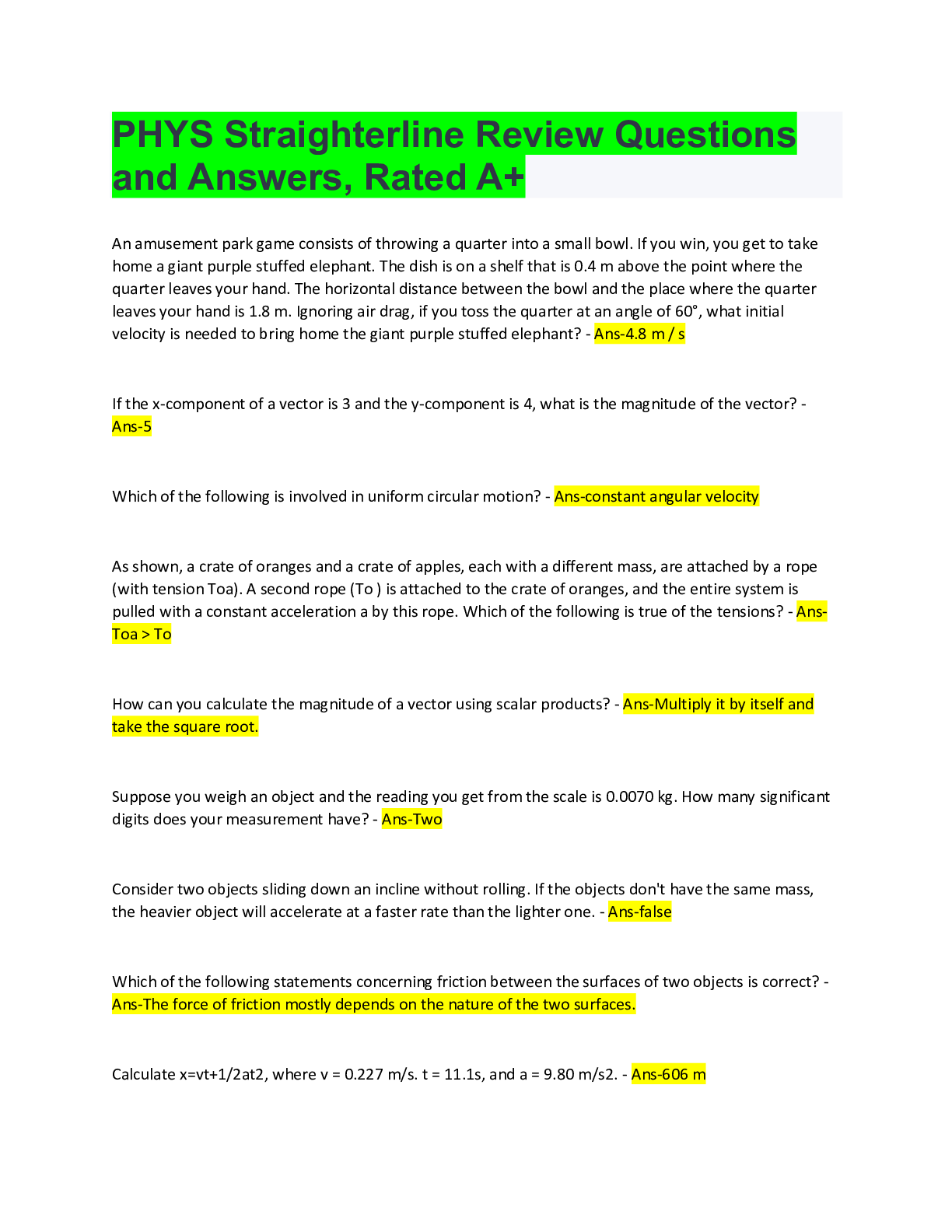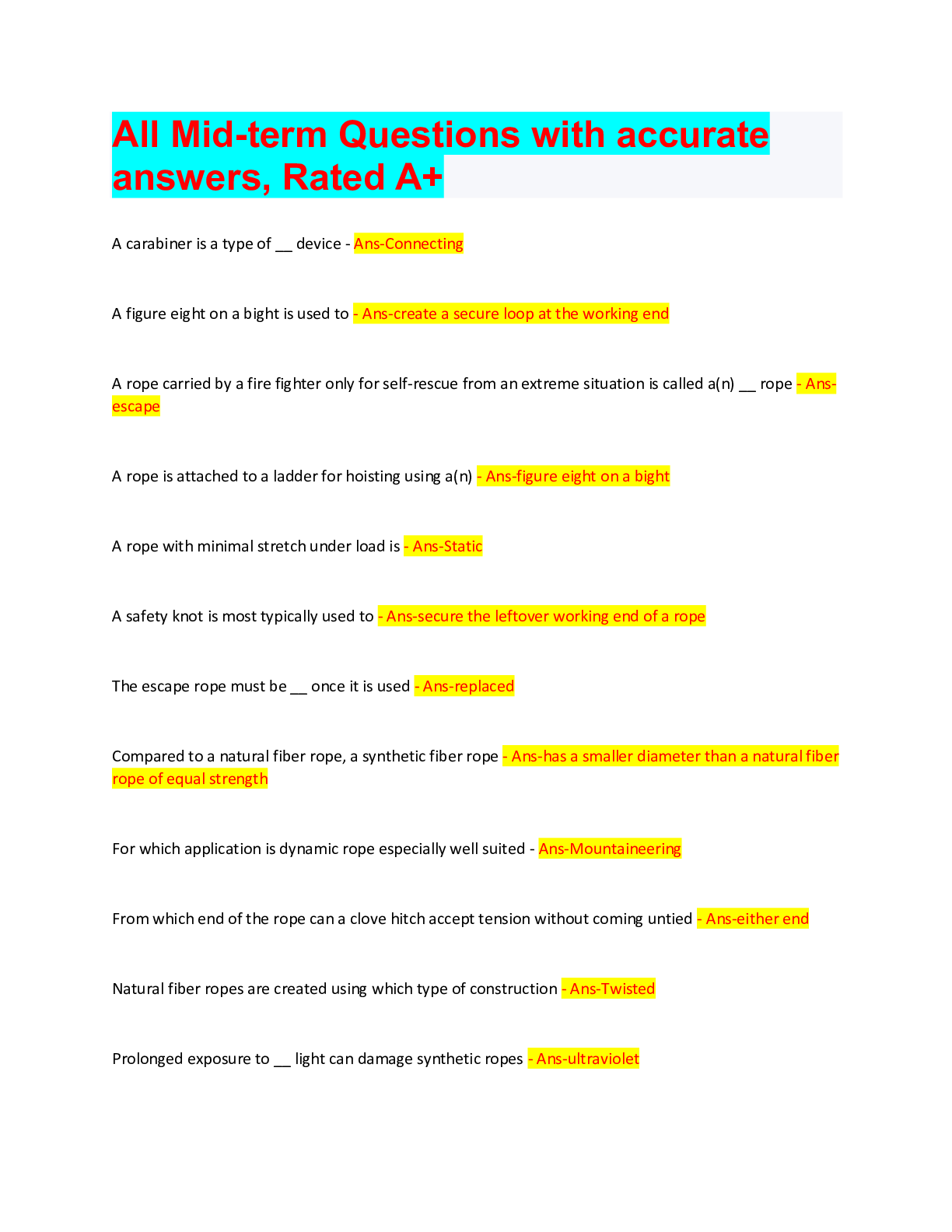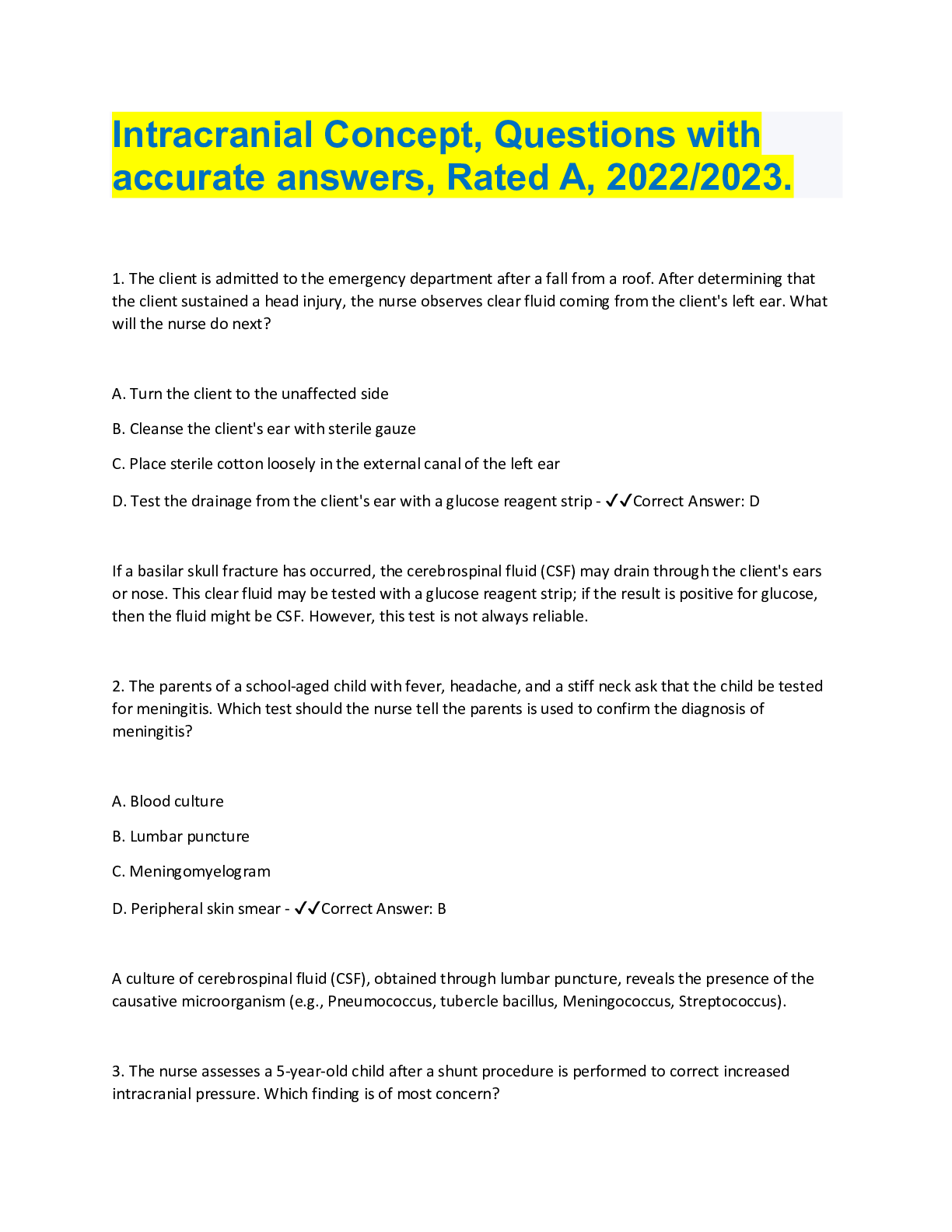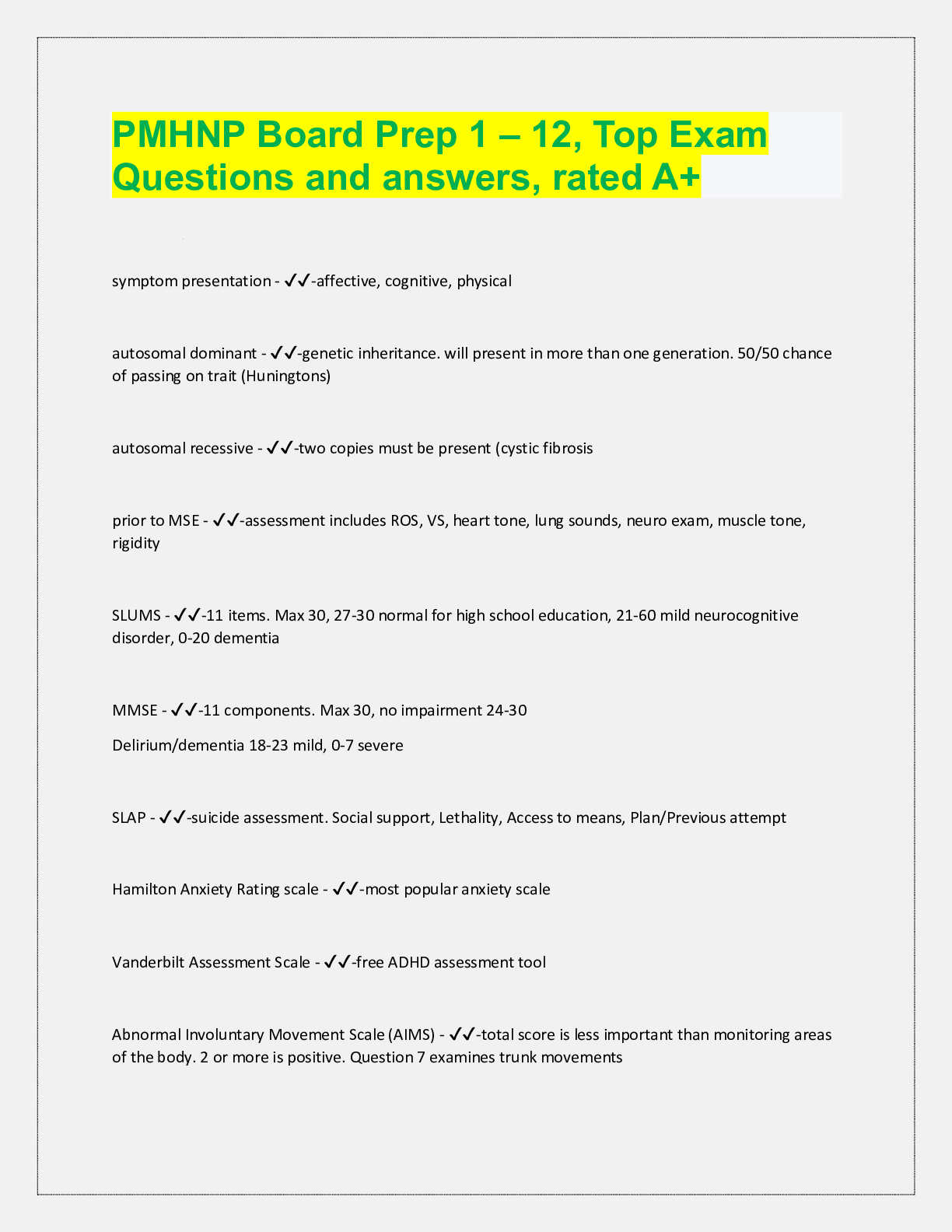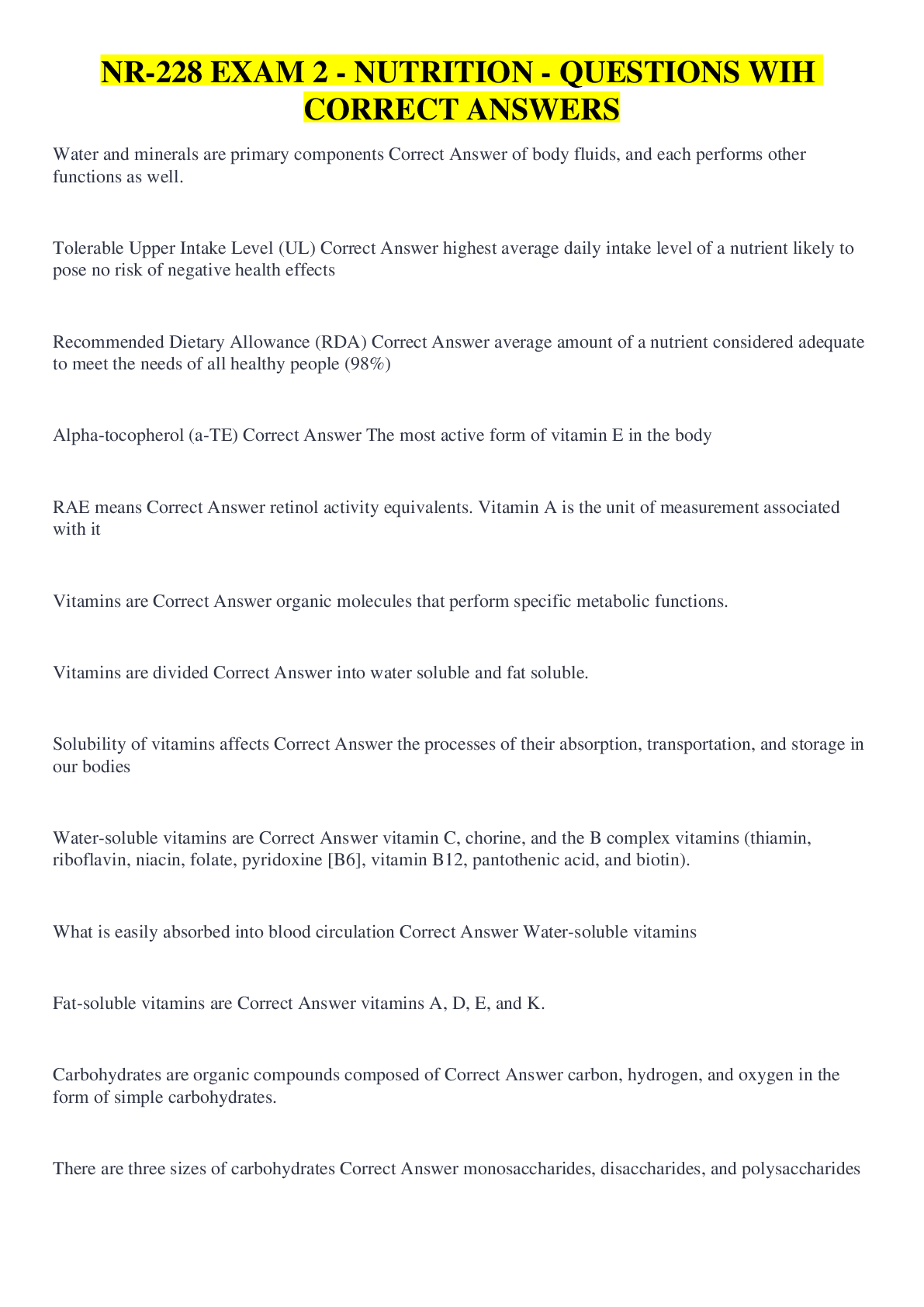Engineering > QUESTIONS & ANSWERS > WGU C165 Integrated Physical Sciences, Exam Sections coverage, 100% Accurate answers, rated A+ (All)
WGU C165 Integrated Physical Sciences, Exam Sections coverage, 100% Accurate answers, rated A+
Document Content and Description Below
WGU C165 Integrated Physical Sciences, Exam Sections coverage, 100% Accurate answers, rated A+ Physics - ✔✔-The study of forces, energy, motion Chemistry - ✔✔-The study of atoms and mole... cules, their structures, and their interactions to form substances Earth science - ✔✔-The study of the Earth's structure and composition, and processes that change Earth essential attributes of science - ✔✔-Studies the natural world Uses testable ideas Relies on data from observations/experiments Presented for evaluation by other scientists Leads to further questions/research variables - ✔✔-The changing quantities in an experiment independent variable - ✔✔-What you change in an experiment on purpose dependent variable - ✔✔-The variable that changes because of an independent variable control variable - ✔✔-The variable(s) you don't want to study, need to be either eliminated or kept constant observational study - ✔✔-When systems are observed as they appear in nature, researchers do not attempt to change them physical model - ✔✔-A model of a physical phenomenon, such as a planetary system conceptual model - ✔✔-A model used to visualize things that cannot be seen, such as atoms mathematical model - ✔✔-A model that treats physical objects/phenomena using mathematical methods computer model - ✔✔-A detailed, complex model calculated by a computer principle of falsification - ✔✔-Principle that only falsifiable statements can be subject to scientific inquiry hypothesis - ✔✔-A testable statement about how something in nature works law - ✔✔-A concise statement that is supported by scientific evidence and repeated experiments, describes a widespread pattern in nature (what) theory - ✔✔-A statement that explains a wide range of observations, supported by a large body of scientific evidence (how/why) meter - ✔✔-Base unit of length kilogram - ✔✔-Base unit of mass second - ✔✔-Base unit of time kelvin - ✔✔-Base unit of temperature Derived units - ✔✔-What is produced when the base units/quantities are combined Speed - ✔✔-The name for the distance traveled divided by an interval of time Volume - ✔✔-Term for the amount of space an object occupies Liquid displacement - ✔✔-Method of determining the volume of an object by measuring the amount of liquid it displaces direct relationship - ✔✔-A relationship between two variables where increasing one increases the other, and vice versa inverse relationship - ✔✔-A relationship between two variables where increasing one decreases the other, and vice versa Velocity - ✔✔-A combination of speed and direction Acceleration - ✔✔-Term for any change in an object's speed and/or direction Force - ✔✔-Term for a push or a pull with direction and magnitude. You may not feel it. Net force - ✔✔-The sum of all forces acting on an object balanced forces - ✔✔-Term for forces that combine to produce a net force of 0 Newton's first law - ✔✔-An object in motion remains in motion unless acted on by a net force inertia - ✔✔-The tenancy to keep the same motion/velocity or remain at rest. Newton's first law Newton's second law - ✔✔-Net force = mass x acceleration (F = ma) Newton's third law - ✔✔-When one object exerts a force on a second object, the second object exerts a force of the same magnitude in the opposite direction on the first object ("For every action, an equal and opposite reaction") friction - ✔✔-The force that opposes the motion of an object on which it acts Kinetic friction - ✔✔-Friction between two objects moving against each other Static friction - ✔✔-Friction between two objects touching but not moving against each other Fluid resistance - ✔✔-Friction when an object moves through a gas or liquid Gravity - ✔✔-Attractive force between objects directly proportional to their masses and inversely proportional to the square of their distance Linear momentum - ✔✔-Name for the mass of an object times its velocity Law of conservation of momentum - ✔✔-Term for the fact that momentum is conserved when two or more objects collide elasticity - ✔✔-The amount of bounce an object has after a collision Elastic collision - ✔✔-A collision in which the total kinetic energy is conserved Inelastic collision - ✔✔-A collision in which the total kinetic energy is not conserved Work - ✔✔-Term for the displacement of an object in the direction of an applied force by using/converting energy Energy - ✔✔-The capacity to do work or cause change Kinetic energy - ✔✔-The energy objects have because they are moving. Increases with mass and velocity potential energy - ✔✔-Energy that is stored Formula for work - ✔✔-work = force x displacement gravitational potential energy - ✔✔-Energy an object has due to its height above the ground. Increases with mass and height. chemical potential energy - ✔✔-Energy that is stored in the chemical bonds in a substance elastic potential energy - ✔✔-Energy stored in stretched springs, rubber bands, etc. electromagnetic energy - ✔✔-Energy carried by electromagnetic waves. Light energy. thermal energy - ✔✔-Energy from the motion of atoms and molecules. Depends on mass and temperature Law of conservation of energy - ✔✔-Term for the fact that energy cannot be created/destroyed, only transferred/converted oscillation - ✔✔-A repetitive motion that occurs around a center point or equilibrium equilibrium - ✔✔-A position or state to which an oscillating object eventually returns to wave - ✔✔-A repeating and periodic disturbance (oscillation) that travels from one point to another, transferring energy mechanical waves - ✔✔-Type of waves that require a medium (air, water, etc.) to travel through, cannot travel through a vaccuum transverse wave - ✔✔-Wave where the oscillation is perpendicular to the direction the wave is traveling longitudinal wave - ✔✔-Wave where the oscillation occurs along the direction the wave is traveling electromagnetic waves - ✔✔-Waves with both an electric and magnetic component. Can only be transverse waves and can travel through a vaccuum compression - ✔✔-Region of longitudinal wave where particles are close together expansion - ✔✔-Region of longitudinal wave where particles are far apart (aka rarefaction) crest - ✔✔-The highest point in a wave above equilibrium trough - ✔✔-The lowest point in a wave under equilibrium amplitude - ✔✔-The distance between a wave's equilibrium and crest/trough in a transverse wave, or how compressed/expanded the medium becomes in a longitudinal wave wavelength - ✔✔-The horizontal distance after which the wave repeats period - ✔✔-The amount of time needed for one full oscillation/one wave to pass frequency - ✔✔-Number of wave oscillations in a given period of time sound wave - ✔✔-A disturbance we can hear that moves through a medium away from the source Matter - ✔✔-Anything that takes up space and has mas [Show More]
Last updated: 1 year ago
Preview 1 out of 14 pages
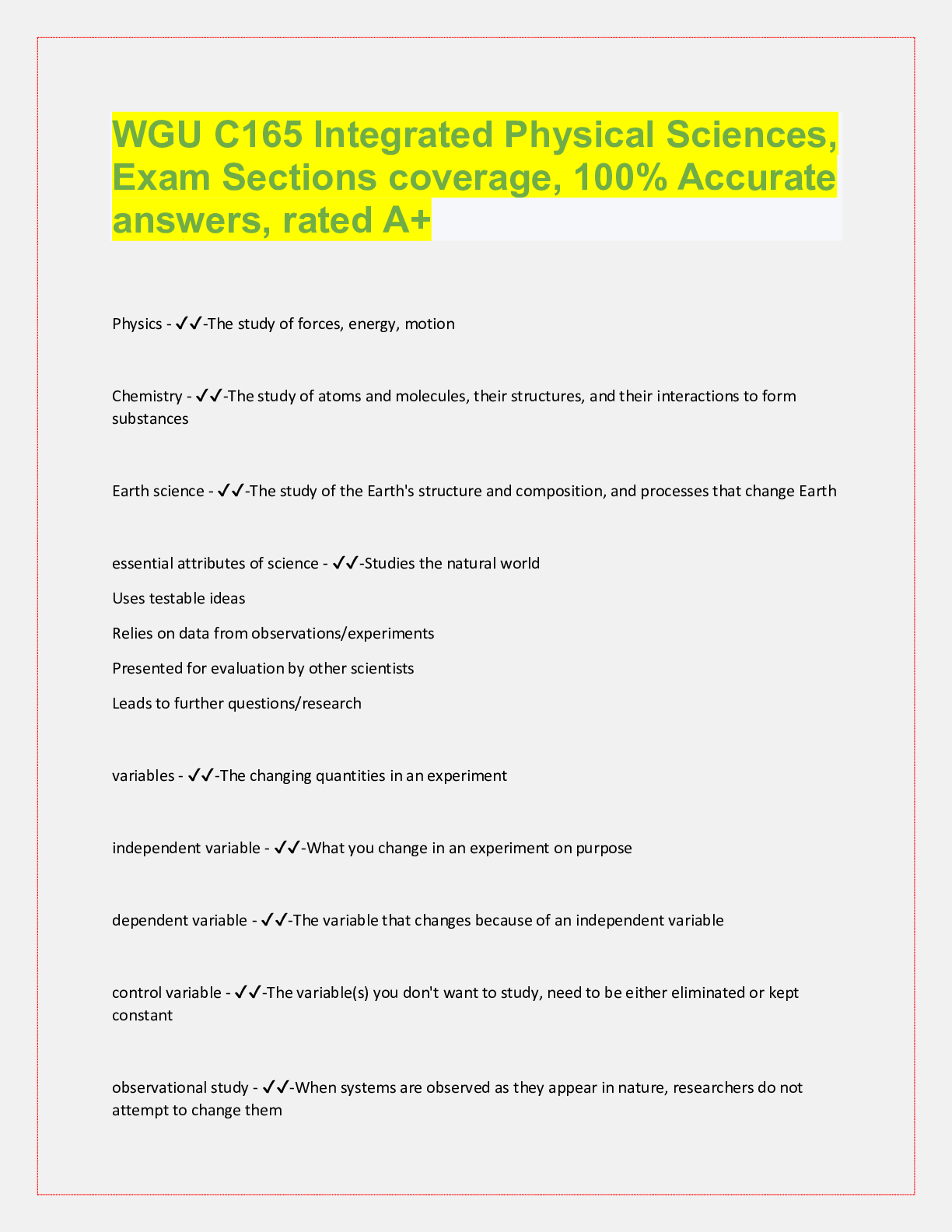
Also available in bundle (1)
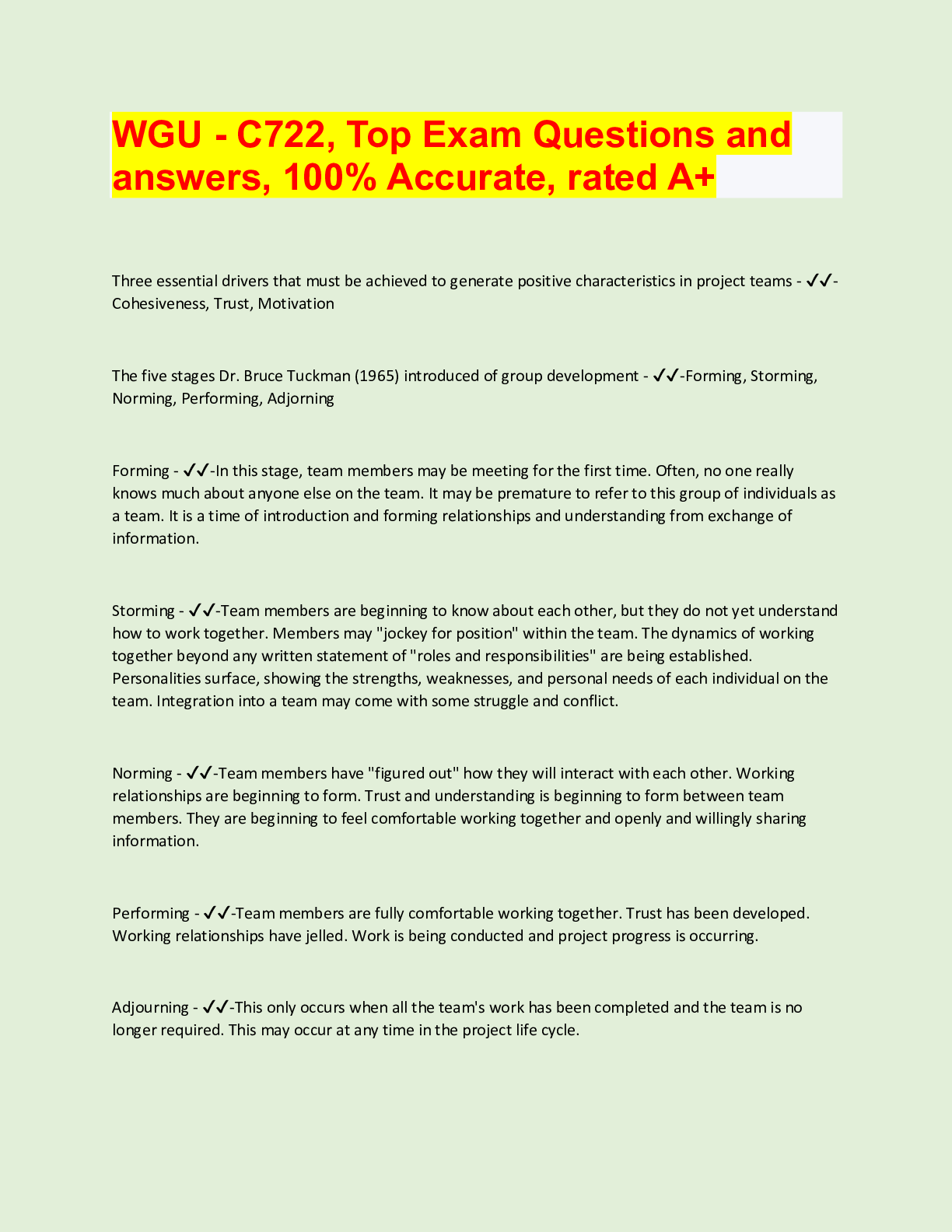
WGU C165 COMPLETE BUNDLE
WGU C165, Top Exam Questions and answers, 100% Accurate, graded A+. LATEST VERSIONS.
By Topmark 1 year ago
$28
19
Reviews( 0 )
Document information
Connected school, study & course
About the document
Uploaded On
Mar 13, 2023
Number of pages
14
Written in
Additional information
This document has been written for:
Uploaded
Mar 13, 2023
Downloads
0
Views
77

